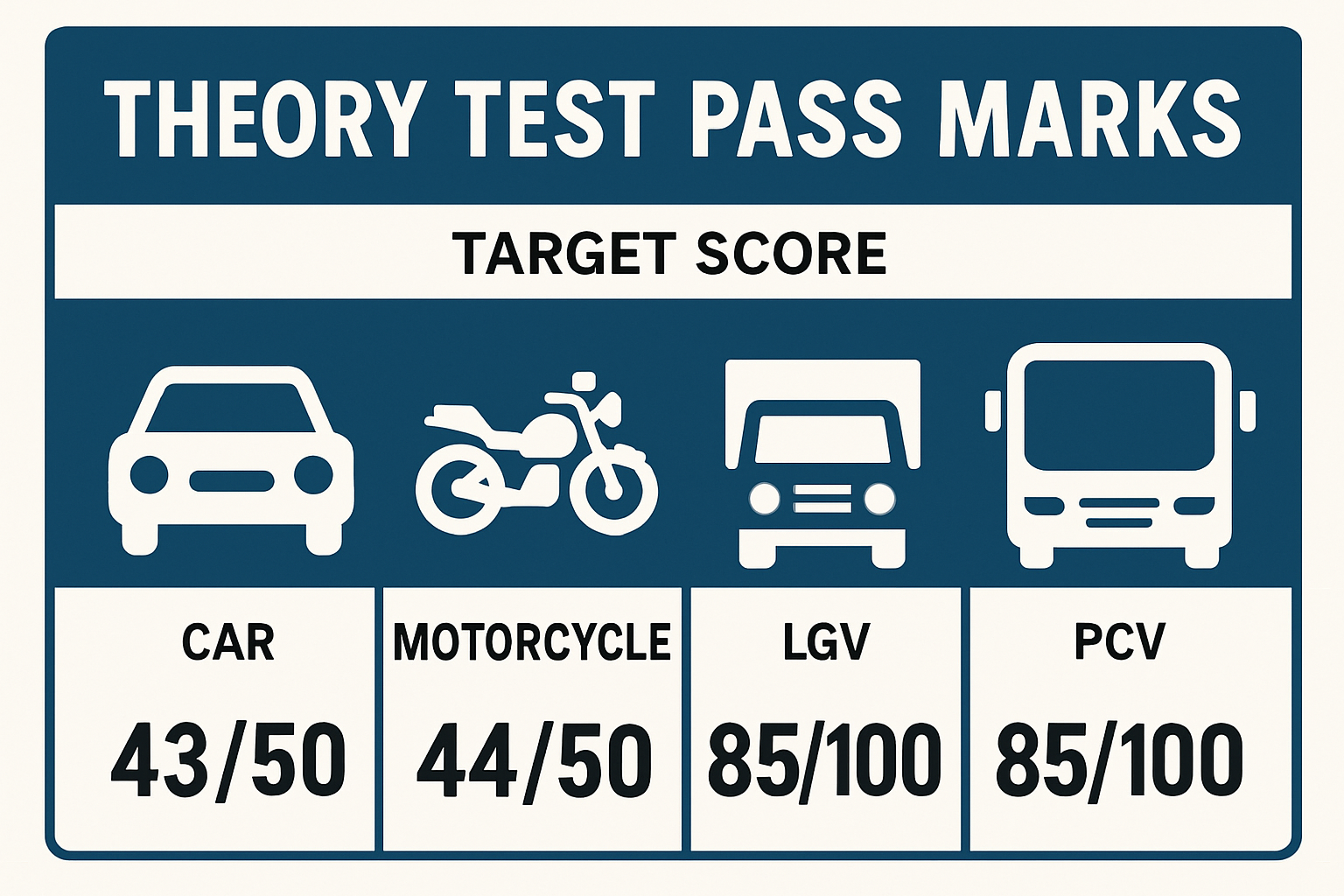Pass Either Side vs Turn Left Only

Understanding the subtle yet vital difference between these blue regulatory signs can make all the difference—especially for learner drivers mastering theory and practical tests. Let’s set them out clearly, in traditional style, grounded in DVSA standards.
1. Pass Either Side of Obstruction (Blue Circle, Two Arrows)

Appearance:
A solid blue circular sign featuring two white arrows—one pointing down-left and the other down-right—around a central obstruction
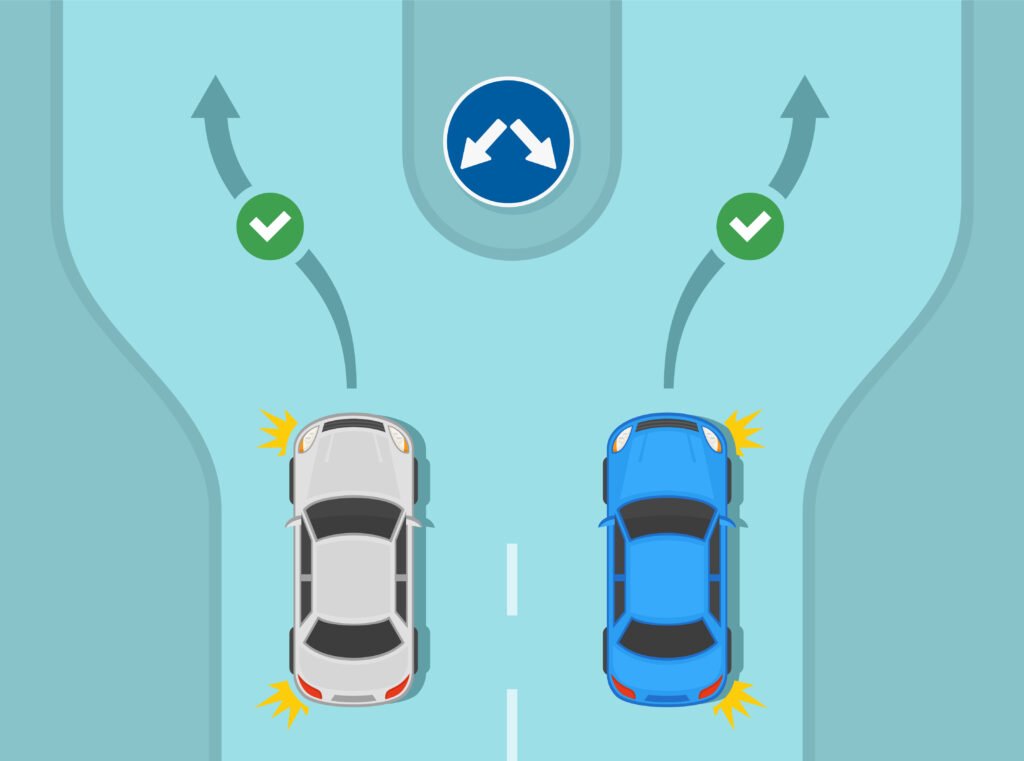
Meaning:
This sign indicates that you may pass the obstruction on either the left or the right. It is typically used where an island, bollard, or central obstruction exists.
- It does not confer priority—it simply gives you the choice.
- It is not a suggestion; it’s a mandatory directive to pass safely on either side.
- Generates less confusion than expected, but remains one of the more misunderstood signs
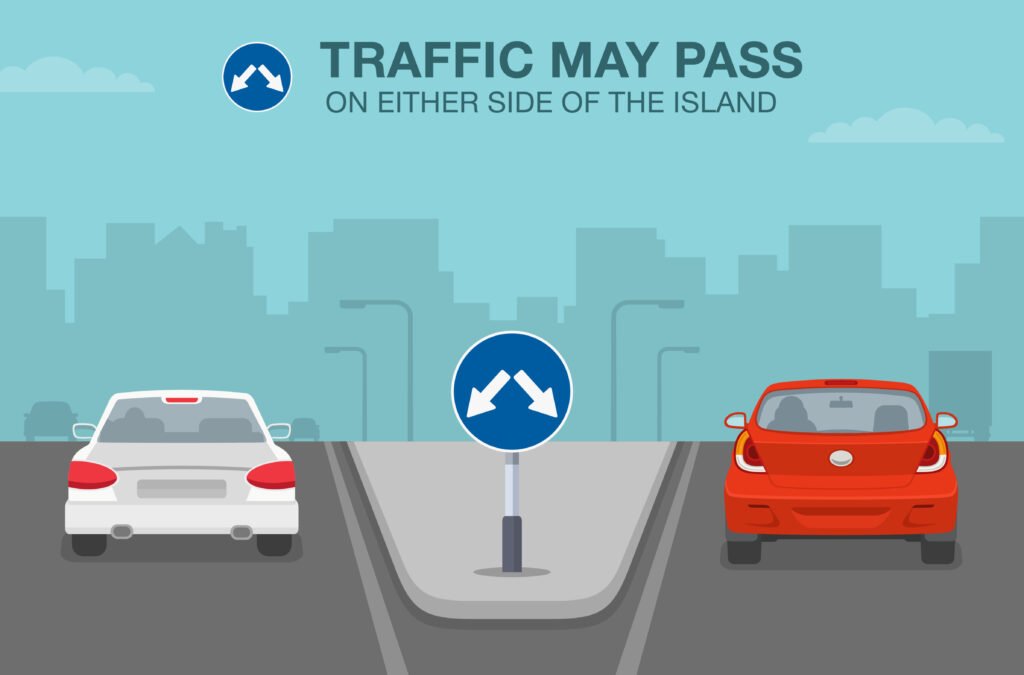
Memory Aid:
Two arrows = two pathways. You have the freedom to choose; just stay alert and safe.
2. Turn Left Only (Blue Circle, Single Arrow)
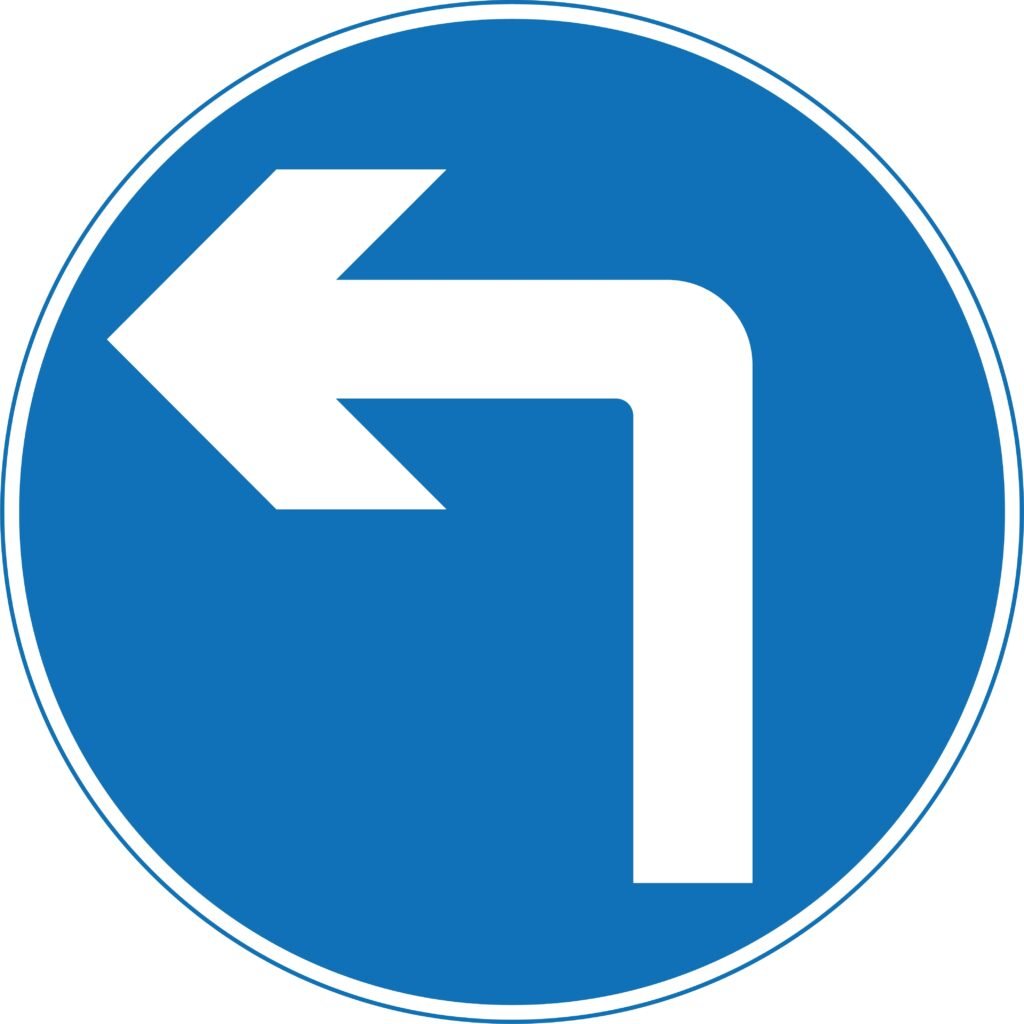
Appearance:
A blue circular sign featuring a single white arrow pointing left
Meaning:
This is a mandatory direction sign—you must turn left. No other directions (straight or right) are permitted.
- You’ll often find this at junctions or T‑junction layouts where road geometry requires a left-only movement.
- Disregarding this is not just careless—it’s illegal

Memory Aid:
One arrow = one way. Left only—no deviation allowed.
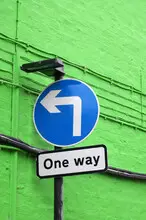
3. Quick Comparison Table
| Sign | Appearance | Meaning | Rule Type | Driving Response |
|---|---|---|---|---|
| Pass Either Side | Blue circle, two arrows | Pass obstruction on left or right | Mandatory choice | Choose either side safely |
| Turn Left Only | Blue circle, single arrow left | Must turn left | Mandatory directive | Turn left only—no alternatives allowed |
Is ignoring these signs considered illegal or careless driving?
Ignoring the ‘Turn Left Only’ sign is illegal because it is a mandatory direction you must follow. For the ‘Pass Either Side’ sign, passing on the wrong side can be unsafe and may also be illegal depending on the road rules.
How can I remember the meaning of these two signs?
For the ‘Pass Either Side’ sign, remember that two arrows represent two pathways and you have the freedom to choose either. For the ‘Turn Left Only’ sign, think of one arrow pointing left, indicating you must turn left only.
What does the ‘Pass Either Side of Obstruction’ sign mean and when should I follow it?
This sign means you are allowed to pass the obstruction on either the left or the right side. It is used where an island, bollard, or central obstacle exists. It is a mandatory directive, not a suggestion, so you must pass safely on either side.
When do I encounter the ‘Turn Left Only’ sign during driving?
This sign is typically found at junctions or T‑junctures where the road layout requires a left turn. When you see it, you must turn left and are not allowed to go straight or turn right.
What is the difference between the ‘Pass Either Side of Obstruction’ sign and the ‘Turn Left Only’ sign?
The ‘Pass Either Side of Obstruction’ sign is a blue circle with two arrows pointing down-left and down-right, indicating you may pass the obstruction on either side, and it gives you a choice. The ‘Turn Left Only’ sign is a blue circle with a single arrow pointing left, mandating that you must turn left and no other options are permitted.
Contents
- 1 Pass Either Side vs Turn Left Only
- 1.0.1 1. Pass Either Side of Obstruction (Blue Circle, Two Arrows)
- 1.0.2 2. Turn Left Only (Blue Circle, Single Arrow)
- 1.0.3 3. Quick Comparison Table
- 1.0.4 Is ignoring these signs considered illegal or careless driving?
- 1.0.5 How can I remember the meaning of these two signs?
- 1.0.6 What does the ‘Pass Either Side of Obstruction’ sign mean and when should I follow it?
- 1.0.7 When do I encounter the ‘Turn Left Only’ sign during driving?
- 1.0.8 What is the difference between the ‘Pass Either Side of Obstruction’ sign and the ‘Turn Left Only’ sign?


